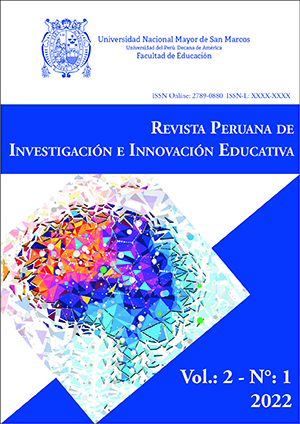Inventory on the study of the musical interpretation of university students of music and conservatories
DOI:
https://doi.org/10.15381/rpiiedu.v2i1.22674Keywords:
Music theory, music performance, historical performance, expressivityAbstract
Interpreting music as a formative, artistic activity and as a technical-practical, theoretical, formal analytical and professional musicological-historical learning, is a complex task that goes beyond the mere intuition that musicians currently have. This article seeks to gather information on the main aspects that make up the study of musical interpretation at university or conservatory level in order to determine its definition and theoretical description, its application in the artistic processes as well as in the teaching-learning processes of young performers dedicated to the professionalization of music. In this sense, interpreting music, from an academic framework, refers to the historical aspect (a concept dealt with since the mid-twentieth century) whose approach involves the search for fidelity and the use of various research tools in order to approach the idea of how the composer wanted his work to sound when it was created. It also includes aspects of grammatical analysis, of cultural and philosophical contexts, of personal contribution at the moment of executing a musical work, that of expressiveness that goes through multidimensional studies such as the GERMS model, and training and evaluation as a university and conservatory academic aspect.
Downloads
Published
Issue
Section
License
Copyright (c) 2022 Fernando José Panizo Pimentel

This work is licensed under a Creative Commons Attribution 4.0 International License.
AUTHORS RETAIN THEIR RIGHTS:
The authors retain their trademark and patent rights, and also on any process or procedure described in the article.
The authors retain the right to share, copy, distribute, execute and publicly communicate the article published in Revista peruana de investigación e innovación educativa (for example, place it in an institutional repository or publish it in a book), with an acknowledgment of its first publication in Revista peruana de investigación e innovación educativa.
The authors retain the right to make a subsequent publication of their work, to use the article or any part of it (for example: a compilation of their works, notes for conferences, thesis, or for a book), provided that they indicate its first publication in Revista peruana de investigación e innovación educativa (referencing authors of the work, journal, volume, number and date).






